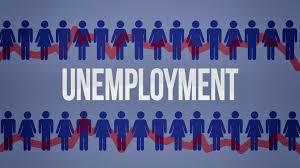
The
Coronavirus Aid, Relief, and Economic Security Act (CARES) that was signed into
law by President Trump on March 27th expanded employment insurance coverage and
increased benefits available to those whose job or ability to work was affected
by COVID-19. Specifically, individuals who typically would not receive
unemployment benefits may qualify.
Pandemic
Unemployment Compensation
The
CARES Act can provide for a weekly payment of $600, in addition to the
unemployment benefits an individual is entitled to. Pandemic Unemployment
Compensation is a federal government-funded flat amount that will be available
through July 31st, 2020. This compensation is intended to provide full wage
replacement for the average US worker. It is not subject to reduction if the
wage exceeds the wages actually earned by the individual prior to becoming
eligible for unemployment.
Pandemic
Unemployment Assistance
The
CARES Act provides Pandemic Unemployment Assistance to individuals who are
unemployed, partially unemployed, or unable to work due to COVID-19 and are not
otherwise for unemployment benefits. Covered individuals include:
- have been or have had a household member diagnosed with COVID–19 or are experiencing symptoms of COVID–19 and seeking a medical diagnosis;
- are providing care for a family or household member who has been diagnosed with COVID–19;
- have primary caregiving responsibility for a child who is unable to attend school or another facility that is closed as a direct result of the COVID-19 public health emergency and such school or facility care is required for the individual to work;
- are unable to reach work because of a quarantine imposed as a direct result of the COVID-19 public health emergency or self-quarantine advised by a health care provider;
- were scheduled to commence employment and do not have a job or are unable to reach the job as a direct result of the COVID-19 public health emergency;
- have become the breadwinner or major support for a household because the head of the household has died as a direct result of COVID–19;
- had to quit their job as a direct result of COVID–19;
- worked in a place of employment that is closed as a direct result of the COVID–19 public health emergency; or
- meet any additional criteria established by the Secretary of Labor for unemployment assistance
Application
of Pandemic Unemployment Assistance
Most significantly, a
person that is self-employed, is seeking part-time employment, does not have
sufficient work history or otherwise would not qualify for regular unemployment
or extended benefits (including because they have exhausted their benefits) and
meets the foregoing criteria is eligible for Pandemic Unemployment Assistance.
This means “gig” workers, independent contractors, and others who are typically
excluded from unemployment are eligible.
An
Individual is NOT eligible if:
- the individual has the ability to telework with pay; or
- the individual is receiving paid sick leave or other paid leave benefits.
The
assistance is available retroactively to covered individuals for up to 39 weeks
beginning on or after January 27th, 2020, and ending on or before December
31st, 2020. As long as the unemployment (partial unemployment, or inability to
work), is due to COVID-19. This 39-week cap does include any weeks the covered
individual received regular compensation or extended benefits (under any state
or federal law) and is subject to an automatic extension equal to the number of
weeks that any benefits may be exceeded.
Typically,
the amount of Pandemic Unemployment Assistance is the applicable state weekly
benefit amount (which cannot be less than the minimum amount under the Disaster
Unemployment Assistance program), plus the Pandemic Unemployment Compensation
payment of $600, and any applicable increases.


0 Comments